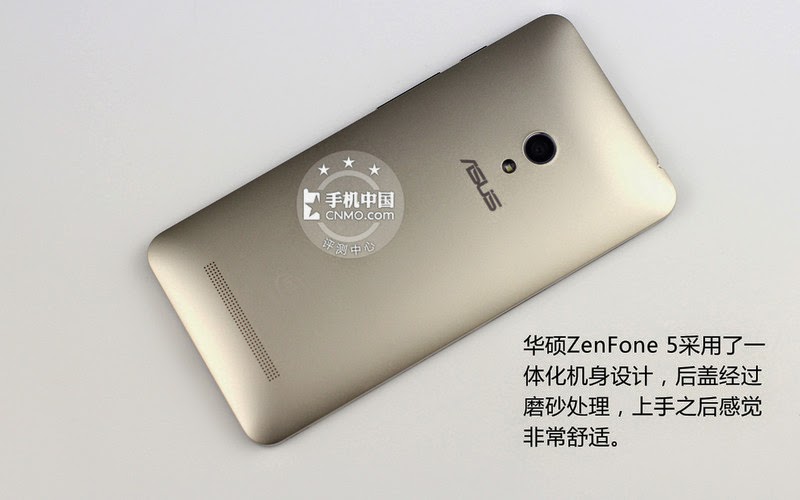[ China Mobile Review ] filed Asus, I believe many people first think of is its motherboards, graphics cards, notebook computers, and the phrase "ASUS quality, rock-solid," the ad is even more popular. In fact, years ago, Asus began to enter the mobile phone market, it is under the command of PadFone family also participated in many international exhibitions, unique design, smooth experience gives the left a deep impression. At this year's CES show, ASUS has introduced a new ZenFone 5, which hit the low-end market, interior equipped with a Atom Z2560 processor. In last week's review them, we also tested its performance, run sub-scores Fengyun basic dual-core CPU with Qualcomm Snapdragon 600 quad-core flat, with red rice Note Standard Edition (1.4GHz clocked eight-core) also compared there is not much difference. Of course, today we are not ready to test the performance of ZenFone 5, mainly look ZenFone 5 workmanship and quality, ASUS pushing a new machine, it could be like if the board process as "rock solid."
ASUS ZenFone 5 with an integrated body design, frosted cover, then started feeling very comfortable.
In the corner of the back cover, there is a gap to open, from here you can open the back cover buckle.
Open the back cover you can see, the Asus ZenFone 5 black carapace is very simple, but work is also unlike most low-end machine so rough. Back shell surrounded by a dozen screws fixed to the fuselage firmness provided a guarantee.
Back shell interior picture.
Asus ZenFone 5 back shell design is rather special, a few notches above the left, the corresponding parts are in contact with the outside world through these gaps, especially in the middle of the SIM card slot, still very rare.
After removing the back shell, Asus ZenFone 5 internal structure will glance, the motherboard from the upper and lower parts. Rough terms, integration of these two very high PCB backplane.
Screen cable (left) / power and volume buttons cable (right)
Power / volume keys keycaps.
Virtual buttons at the bottom of the connection cable (left) / connecting the upper and lower board flexible printed circuit board (in) / power cable (right).
RF line.
From the front of the exposed part of the PCB backplane can be seen, it inherited a lot of small components.
They saw the familiar ASUS LOGO, although the official did not say, but the machine should be designed and manufactured motherboard from ASUS home, after all, it is also the origin of the board to do.
SKhynix 8GB memory chips.
Batteries also from Asus.
Overall, the ASUS ZenFone features 5 is still very distinctive: a simple internal structure of the machine, disassembly and difficulty of maintenance is not large, if not the chip level repair, replacement parts child alone if the cost is not high; 2 motherboard from ASUS own design and production, relying on years of experience and deep inside, the quality is guaranteed; 3, new layout, core components, enough material handling and process is relatively detailed. Before the news that Asus ZenFone 5 mainstream price should be in the thousands, if true, then it is sufficient to work in top gear at this price, certainly better than millet, more solid kind of glory.
Source: CNMO.com


















